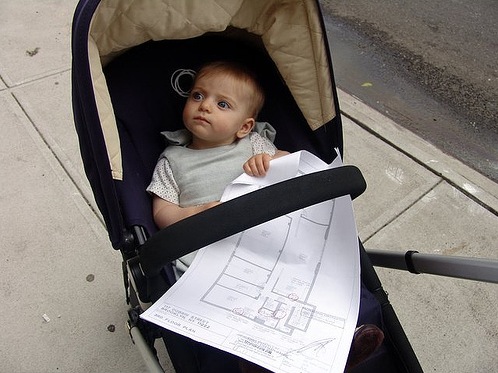View current page
...more recent posts
Curbed keeps us abreast of all the horrible "luxury condos" going up in the New York metropolitan area, has interesting views of things happening on the street (like the eviscerated rabbit in a block of ice found in Union Square), and great photo captions. "Jeremy's" are frequently on the money. This one reads "My architect assured me the changes had been made."

"Showing new media work in the gallery": what's at stake.
I have been working on a marathon interview that will be posted on the interviewer's site soon. The subject, more or less, is "showing new media work in the gallery," centering on my and another artist's current shows, and the interview has become like this insane Fluxus event where new information keeps surfacing and the dialogue goes on and on. I think it will be enjoyable to read, for all that.
I was talking to the interviewer yesterday and we uncovered more broad swaths of things that could have been said. Here's a summary of some of those items, before I forget, plus some stuff I just thought of.
1. The "tech discussion" is boring but there are some fundamental things that need to be covered. Specifically, what similarities exist between art and design in the web/computer environment and aesthetic principles of the art world. In the interview we talked some about the differences between the remixology/upload/download culture of the internet and the art world's need for defined, specific objects that can be shown in real space. My comments below are mostly about the similarities in the form of "minimalist" sensibilities common to the art and geek worlds.
2. Design consultant/philosopher/guru Edward Tufte talks about the need to reduce elements (in charts, etc) for maximum clarity and information flow. The minimalist sensibility in the art world talks about unnecessary gestures and ornamentation and "truth to materials" used to make art.
3. Software (e.g. Windows, Adobe) that is cluttered with unnecessary bells and whistles and extraneous lines of code is not beautiful or good. The "hacker aesthetic" seeks to remove this clutter (in Linux, Firefox, etc) so that users have more control over their lives.
4. Conceptualism in art also seeks to peel back the control mechanisms, to dismantle or parse the aura of the white cube and the mercantile systems underlying art (and therefore information) exchange.
5. In my case, my art is made in the simplest paint and GIF programs so I can eliminate some of the superfluous or overly controlling features of more "state of the art" software. Cory Arcangel and others have hacked even deeper--trusting only the numbers themselves under the graphic interfaces.
6. By putting the GIFs in the gallery (as videos), I'm making an immaterial art that is highly context dependent--depending on the shape of the room, lightness or darkness of walls and floor, and acoustics (for pieces with sound). I want the viewer to recognize the almost joke-like simplicity of the imagery (but not "overly simple," that's where the interviewer and I initially disagreed) and reflect on the mechanisms of the GIFs as well as the mechanisms of the white cube.
7. The other artist in the interview had similar goals but a very different approach, in that his presentation is more high tech and memory-intensive (even though his imagery is videogame-clunky), and the work is more absorbable into the gallery-collector-museum commodity stream by virtue of consisting of easily dispersable, physically portable pieces, with current hard drives, nice flat screen monitors etc..These "video-objects" will look pretty consistent everywhere they're shown, whereas mine change with the vagaries of available equipment and will be reconfigured on the fly for every space and hardware configuration. (Even though the underlying DVDs are offered for sale.) We never had a chance to really debate our different approaches, and I'm not sure we wanted to. Suffice it to say he has a better shot at posterity by meeting the commodity system halfway (as opposed to my quarter-way).
8. To sum up, the common (mostly unspoken) points of inquiry in the interview were: (i) what is the hacker aesthetic? (ii) what is the "gallery aesthetic"? (iii) how can these aesthetics be commingled? and most importantly, (iv) how can the viewer be made to understand these ideas just from viewing the work itself, without a podcast to explain it?
